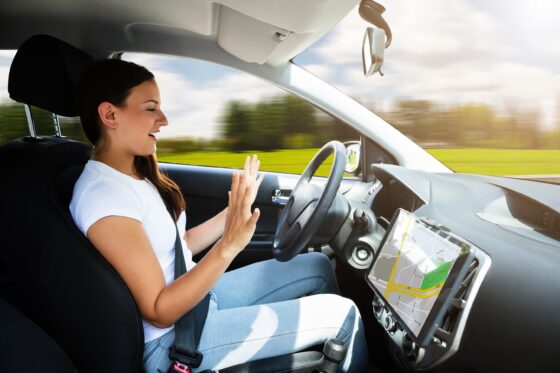
Guidance sites and applications will have to better inform users about the negative impact of their trips on the environment and their health, offer less polluting trips and alternatives to the car, the government announced on Monday.
Once a user tries to plan a trip, the result should show an estimate of the pollution caused, showing the amounts of greenhouse gases and air pollutants (nitrogen oxides, PM10 particles) emitted by the different modes of transport proposed.
Multimodal transportation applications and sites, such as Google Maps, Moovit, Mappy or Bonjour RATP, should “highlight” the “lowest greenhouse gas impact route proposals”.
If the journey includes a passage by car over a section where the maximum permitted speed is greater than or equal to 110 km/h, these applications must offer alternatives that allow a speed reduction of 20 km/h and thus fewer emissions.
Where they sometimes send motorists back to secondary roads, to the annoyance of local residents, these applications will now have to “striving to offer” auxiliary routes “the massive avoidance of secondary roads that are not intended for intensive traffic”. Unless these diversions result in a saving of more than 10% of the remaining travel time, or if there is work or an accident on the main track.
These provisions, voted in August 2021 in Article 122 of the Climate Act, were published in a decree in the Official Gazette on 3 August and clarified by an order from the delegated Minister of Transport.
In addition, from December 2022, all sites and applications will be required to broadcast regular awareness messages when a user plans a car trip.
These messages of type “Prefer walking or cycling for short journeys” Where “Going from 130 to 110 km/h on the highway reduces your fuel consumption by 20%” will be accompanied by a “#SeDéplacerLesPolluer” signature, which is already mandatory in car advertisements.
Applications should also inform users of any traffic restrictions, such as low emission zones (ZFE), which are expected to increase in the coming years.
Multimodal applications will also become the “data related to the bicycle network, carpool areas and parking” collected in the database of the website transport.gouv.fr, and by the end of 2023 all offers for public transport and shared vehicles (bicycles, scooters).
AFP